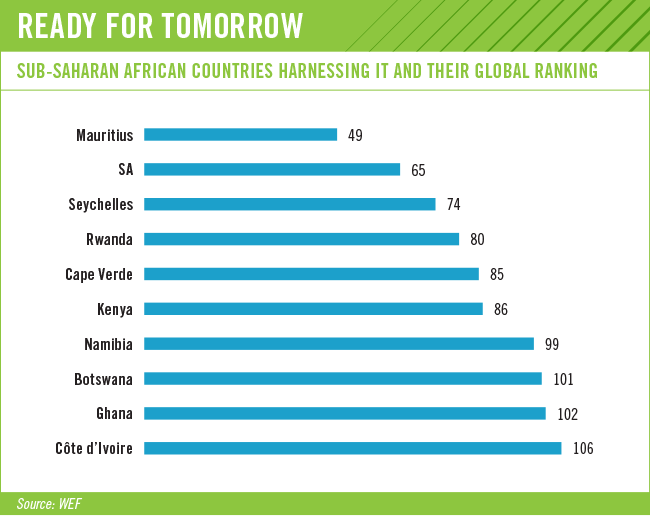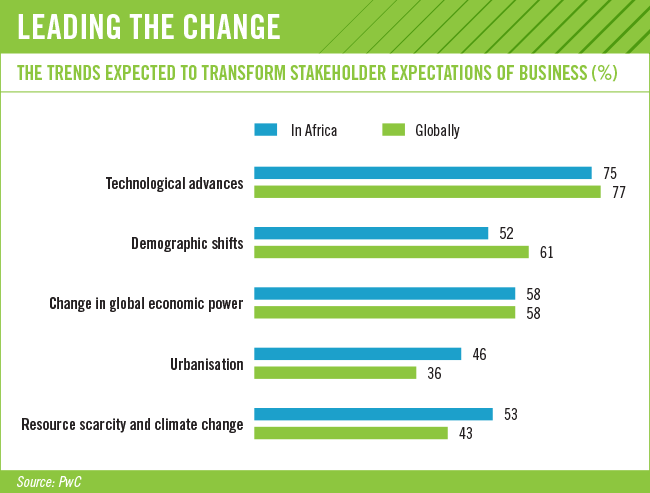The workplace of today is radically different from just three decades ago, yet many executives don’t realise a shift has happened – let alone how big that shift has been. A personal computer on every desk and a mobile phone in every pocket means that the office worker has access to unlimited information and communication. Thanks to automation of both machines and processes, the very engine of business has fundamentally changed. Yet this dramatic shift is likely a mere curtain raiser to what comes next.
‘We are at the dawn of a re-acceleration of the technology industry,’ according to Pat Gelsinger, CEO of cloud computing giants VMware.
‘The next decade will see more change and more new technology than in the last 20 or 30 years.’ Gelsinger was the architect of the original Intel 486 processor, which helped to drive the widespread adoption of PCs in business during the 1990s. He then became the first chief technology officer at Intel, leading its research projects into the next decade. So one would surely expect him to rate that as the most exciting era yet for business technology.
On the contrary. ‘In many cases, the next decade is as exciting as the last three put together. An accelerating crescendo of technologies is coming together – cloud, mobile, big data, robotics, analytics, 3D printing and more. It will bring together a reinforcing set of innovative activities. So many of these things will become life changing and business changing.’
Gelsinger was speaking in an interview at the recent Mobile World Congress (MWC) in Barcelona. The event has been the bellwether of mobile technologies since 1987 when it was inaugurated as GSM World Congress. As the name indicates, it focused on what was then a pioneering technology that would be used for all cellular phones in Europe and Africa in the following decade.
If the PC provided the foundation for undreamed of efficiencies in business, then the mobile phone brought in unimagined mobility. The storage capacity of PCs resulted in massive space saving on files, documents and administrative activity. Their processing power allowed logistics management and data processing on a scale that previously had demanded either large administrative workforces or giant mainframe computers, affordable by only the largest corporations.
The 2017 edition of the congress symbolised the changes that are about to invade the business world. And some of those changes can’t even be seen by the naked eye. For example, artificial intelligence (AI) represents the ability of computers to analyse massive amounts of data continually; learn from the patterns, changes and anomalies in the data; and produce relevant responses. In other words, make decisions.
The technology was most dramatically demonstrated in its application for autonomous vehicles, which will require hundreds of ‘decisions’ every second to keep cars and their passengers safe.
Peugeot, for instance, unveiled its Instinct concept car, with four driving modes based on the needs and mood of the driver, namely drive boost, drive relax, autonomous soft and autonomous sharp. The car has access to the driver’s schedule and vital signs – thanks to a connected smartwatch – and can decide to change the music to bring down your heart rate or alert the office that you will be late.
Ford – which has always been the technology pioneer among car makers at tech shows and last year used MWC to unveil its positioning as a mobile technology rather than an automobile company – once again took a step into the future. It revealed Autolivery, which envisages autonomous electric delivery vans with onboard delivery drones, designed for crowded high-rise cities. The vans make their way to the building and then dispatch a drone with the parcel to the appropriate floor.
Obviously many practical problems need to be solved to make this a reality but it was just one of a variety of concepts Ford unveiled as part of its message that logistics, shopping and fulfilment are going to look very different a decade from now.
Some of the technology that will change the way we do business is already here. Video is expected to account for half of mobile operator revenues by 2020, says Huawei deputy chairman and rotating CEO Eric Xu. ‘In today’s world, video is not an option – it is a must, and it will become a part of our life,’ he said in a keynote address, adding that industry video would become a $350 billion category, due to the demands of video-hungry applications in commerce, education and surveillance, among others.
Business communications, including video conferencing and video messaging, will account for a further $18 billion annual spend by 2020. By then, another new communications technology will have become a reality, and 5G (the next generation of mobile communication after 3G and 4G) will most likely be mainstream. Initially intended for secure, reliable, large-scale and fast connections between devices, it now also promises to serve far more users at the same time, far lower battery consumption and far less latency (the lag on many mobile connections) than is possible with 4G.
Individually, each of these improvements could probably be achieved through better design of existing technology. Collectively, they represent yet another revolution in connectivity. For business, that could mean less physical infrastructure, ultrafast data and document sharing, and even greater efficiencies than those made possible by the PC and mobile revolutions.
‘In the next decade, 75% of the world’s population will have a persistent connection to the internet with some smart device,’ said Gelsinger. ‘Today it’s already 40%. Soon, you’ll be able to touch half the world’s population.’ These devices will come into their own once intelligence is added. ‘I can put intelligence into everything for almost zero cost. So while there are more people than machines connected today, in the next few years there will be twice as many machine-connected intelligent devices as human-connected intelligent devices. It will transform supply chains and our quality of life.’ Emerging markets, including SA, may well have ‘some of the greatest opportunities we have collectively over the next decade’, he said. Consumers in those markets are less likely to opt for a $700 iPhone and $100 service if there are $20 device and $10 service alternatives, and this will ‘see rapid innovation around affordable access to core technologies, basic financial services, crop information, trading information’.
These sentiments were echoed by Frank Kern, CEO of Aricent, a global technology services company with a focus on software and hardware innovation. Having spent 30 years at IBM, he came out of retirement to take up the challenge of the future. ‘This is the most exciting time yet,’ he says. ‘Before, I was just in the boring old computer industry. I was around when IBM did a lot of interesting stuff. We created a services business, I ran the consulting business and in 2009 I created an analytics practise with 9 000 people, worth $25 billion. But today is the most exciting time of all.
‘It’s a time when you have a combination of an explosion of sensors, accelerating of communications, combined with the software capabilities of AI, and now we are designing the user interface of the future, the customer experience of the future.’
Many businesses are already preparing for this future. For example, major SA banks have launched mobile phone apps and are trying to persuade their customers to bank via these tools rather than in a branch or even on the web.
One reason is that the app can draw on personal information stored on the user’s phone, both to authenticate transactions more easily and personalise interactions. FNB has introduced text chat via its app, and this is likely to soon be followed by AI ‘chatbots’.
It is not only banks that can take advantage of these tools. It can also be seen in small, isolated pockets of the insurance industry, health sector, transport, education and local government.
Eventually, a decade from now, the business world will be radically different from that of today. Again, many executives will not even realise a shift has happened. But if, 10 years from now, they want a better sense of how big that shift has been, they would be well advised to take photos of the typical office desk now as the ‘before’ image, and compare it with the ‘after’ picture a decade from now.
In the same way that PCs suddenly arrived on desktops, and mobile phones in hands and pockets in the last century, before long computers will have disappeared into the background, and voice will be the main form of interaction between human and machine. To borrow from the title of one of Bill Gates’ books about the tech revolution, business will be conducted at the speed of thought.











